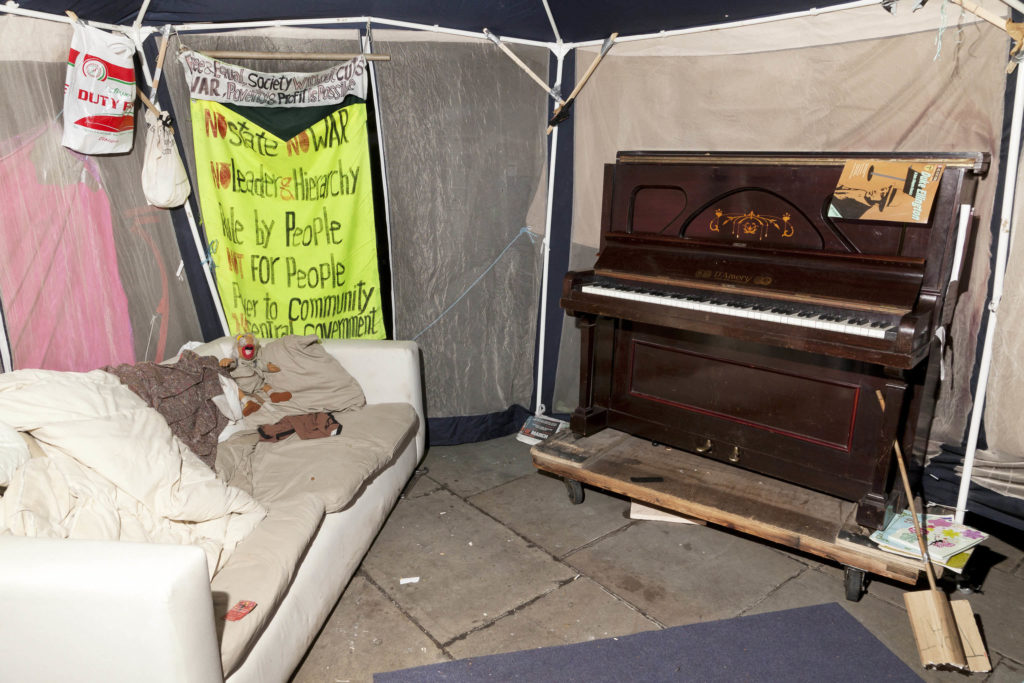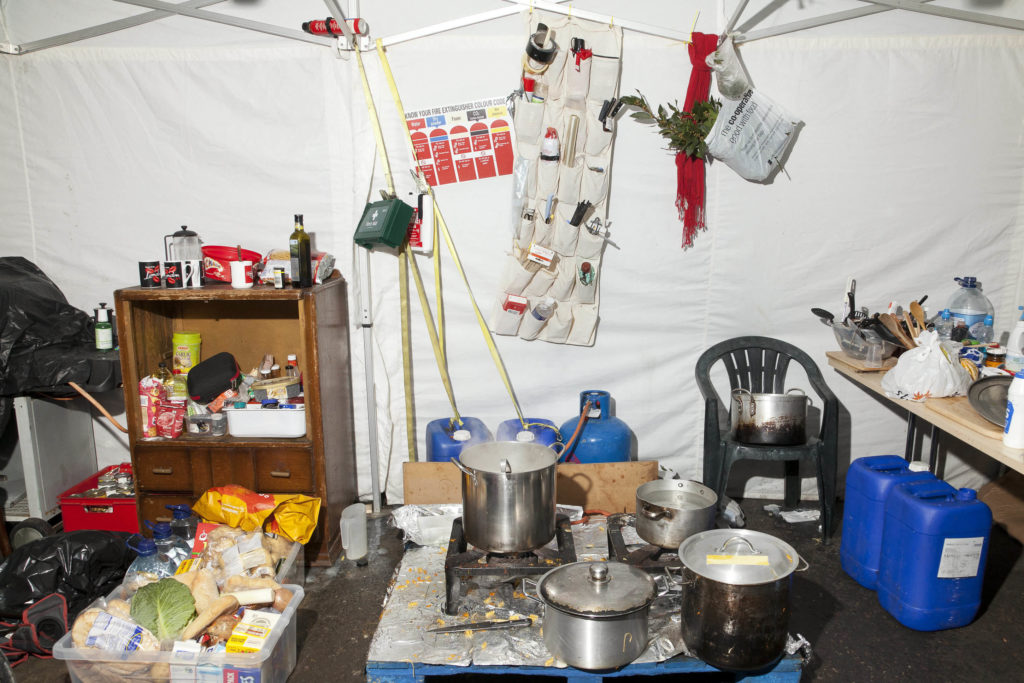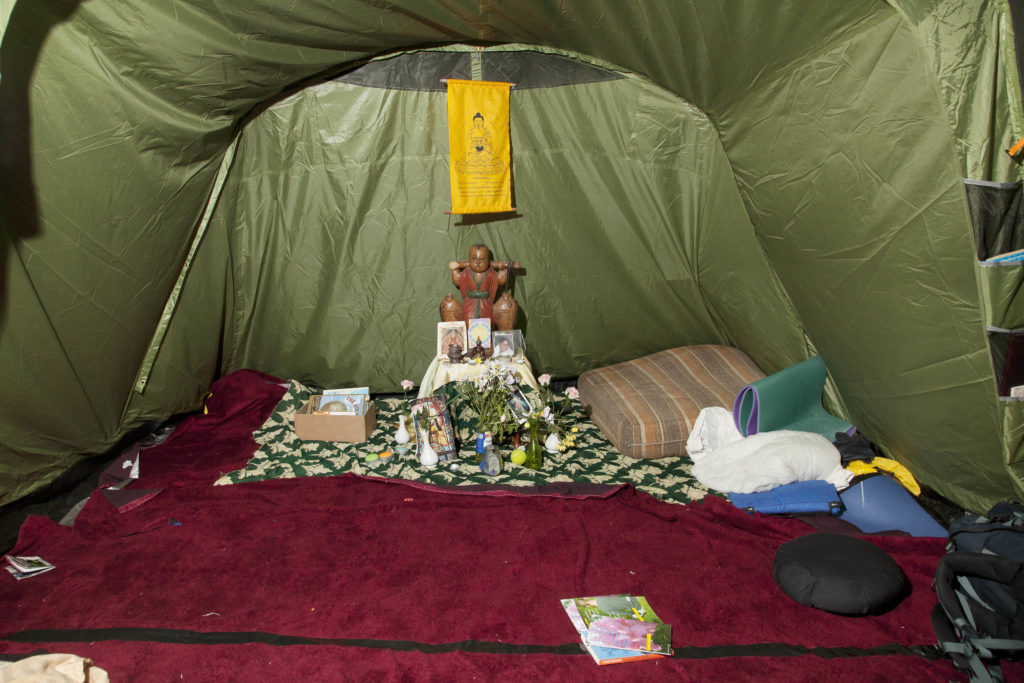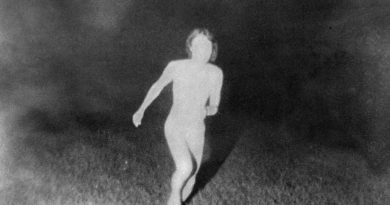London Occupy tents documented without the actual “human” element: Ben Roberts
“While it would have been very easy to photograph protestors inside their tents, I was keen to avoid overtly literal interpretations of the Occupy Movement.”
Interview by Yiğit Atılgan
It’s been five years since protestors occupied New York’s Zuccotti Park to protest against social inequality. Spreading to tens of different cities afterwards, the camp set up in front of and around St Paul’s Cathedral was one of the locations of Occupy London protests. Here’s our conversation with documentary and travel photographer Ben Roberts on his “Occupied Spaces” series that went inside protestors’ tents during the movement, his approach to protest photography and The Occupy movement from his origins to its current status today.


It has been five years since protesters set up a communal camp outside St. Paul’s Cathedral in Central London. Can you refresh our memories about what the main aims of the protests were and around what common demands the occupiers came together?
Starting on the 15th October 2011, the Occupy London protest was initiated in solidarity with the Occupy Wall St. camp that commenced on September 17th of the same year. The global Occupy Movement is a loose organisation that protests against social inequality and lack of “real democracy” around the world, its primary goal being to advance social and economic justice and new forms of democracy. The camp saw a coming together of different protest groups, including UK Uncut and a London-based outpost of the Spanish 15M movement. The original aim of the group was to set up a semi-permanent protest camp outside the London Stock Exchange, but after this plan was rendered impossible by a pre-emptive injunction, a camp was set up in front of and around St Paul’s Cathedral, a highly visible and recognisable location.
On the 16th of October, after consulting with as many as 500 protestors, the following ‘Initial Statement’ was issued.
1 The current system is unsustainable. It is undemocratic and unjust. We need alternatives; this is where we work towards them.
2 We are of all ethnicities, backgrounds, genders, generations, sexualities dis/abilities and faiths. We stand together with occupations all over the world.
3 We refuse to pay for the banks’ crisis.
4 We do not accept the cuts as either necessary or inevitable. We demand an end to global tax injustice and our democracy representing corporations instead of the people.
5 We want regulators to be genuinely independent of the industries they regulate.
6 We support the strike on 30 November and the student action on 9 November, and actions to defend our health services, welfare, education and employment, and to stop wars and arms dealing.
7 We want structural change towards authentic global equality. The world’s resources must go towards caring for people and the planet, not the military, corporate profits or the rich.
8 The present economic system pollutes land, sea and air, is causing massive loss of natural species and environments, and is accelerating humanity towards irreversible climate change. We call for a positive, sustainable economic system that benefits present and future generations.
9 We stand in solidarity with the global oppressed and we call for an end to the actions of our government and others in causing this oppression.
You have been interested in focusing on photographing the camp after the occupation was demeaned by the media. What exactly triggered you?
I’d passed by the Occupy London camp on a number of occasions on my bicycle, and it had always appeared to be a hive of activity. When some of the right wing newspapers (The Telegraph and the Daily Mail) ran a story claiming that the majority of the tents were not inhabited overnight, I just didn’t think this was plausible. The media used photographs taken with a ‘thermal imaging’ camera to show the tents without people sleeping in them, but there was no scientific explanation as to how accurate these images were, or when they were taken. I’ve always loved camping and have slept in tents on countless holidays and adventures, and I figured that by simply looking at the contents of a tent I would be able to see if it was being occupied on a regular basis. It struck me that a series of stark, architectural photographs of the tent interiors could be an effective way of countering the supposedly incriminating images run by the media. The traces of humanity in the photographs would offer decisive proof that the camp was occupied.
Did you have any problems in gaining access to people’s private spaces inside the tents? How did you approach the protesters?
One of the side effects of the ‘anti-occupy’ bias from certain sides of the media was that photographers and journalists were not readily trusted. I pitched my idea in advance to the media and communications representatives at the camp. My status as a freelance contributor to The Guardian and The Financial Times (generally recognised as more balanced media outlets, or in the Guardian’s case more supportive) probably helped me gain their trust. I shot the whole project in one evening, on the 31st October 2011. Gaining access to the communal spaces was relatively easy, it was simply a case of talking to people and asking them to vacate the tents for 30-40 seconds while I took my photographs. I worked very quickly, without a tripod and using a small handheld flash on full power to illuminate the tent interiors. Gaining access to the more private tents, used for sleeping, was more problematical. Explaining my project and my reasons for making the photographs was very straightforward, but understandably some protestors were unwilling to allow a photographer into what was effectively their temporary home. I endeavoured to be respectful; if people didn’t want their tents to be photographed I wasn’t pushy, I simply thanked them for their time and moved on. Fortunately, plenty of the people that I spoke to understood the project immediately and had no problem with me photographing inside their tents. Again, it helped that I was accompanied by Naomi Colvin from the Occupy London media team, whose presence lent me legitimacy. Further down the line, Naomi kindly wrote the essay that appears in the ‘Occupied Spaces’ book.
In capturing the political spirit of such protests, the human element is always forefront. You have decided to capture the human element by focusing on the tent interiors and pushing people out of the frame. How did you make this decision?
Much of my work involves some kind of portraiture, but in the years previous to photographing ‘Occupied Spaces’ I had been working on a long term project documenting the effects of the economic crisis on the landscapes of Spain. I spent many days walking through the outskirts of cities, scanning the environment for traces of human interference that were the scars of Spain’s construction boom and subsequent collapse. The majority of these photographs were devoid of people, but loaded with the signifiers of humanity. While the interiors of the Occupy London tents were obviously more contained than the chaotic ‘edgelands’ found on the fringes of urban areas, for me it was obvious in advance that the resulting images would operate in a similar way.
While it would have been very easy to photograph protestors inside their tents, I was keen to avoid overtly literal interpretations of the Occupy Movement. A number of portrait series of protestors were already circulating around this time (in particular from the Occupy Wall Street camp in New York) and I didn’t feel like following this approach would add anything to the debate, at least in visual terms.


Did you look for any specific things inside the tents? Or did you choose not to intervene in what the camera sees? What unexpected things did your camera reveal for you?
All of the spaces that I photographed were shot ‘as found’. In the only exception to this rule, ‘The Peace Tent’, the owner of the tent was keen to organise the sleeping area a little bit in advance of the photograph. I felt like it would have been unreasonable to object to this. In this series I was hoping to capture the slight feeling of disorganisation that is inherent in camping. You have a limited space in which to sleep, get changed, and store personal belongings. Over an extended period of time, the majority of campers will become a little more laissez-faire in the organisation of their personal space. While individual items may have their space, a totally clean and organised tent is a rarity.
I love how some of the photographs benefit from a closer look. The communal spaces in particular contain a complex ecosystem of artefacts built up by successive users, items left behind or forgotten by any one of a multitude of users. The tapestry of objects includes a bunch of flowers, cigarette butts, a self-help book, a sign saying ‘NO PHOTOS’ and a printed article with headline ‘How to cope with being attacked by the police and other assailants. In one tent, a note reads ‘Eat Me’ with a smiley face; scrawled underneath in a different hand, a response ‘With pleasure, when are you back?’.
How did you approach this series from a compositional and photographical point of view?
At the time of making this work, I had a full time job as a photography technician at the University of West London and was also training for the London marathon. It was a busy time, and I knew that I had limited time for pursuing personal project so I was very keen to shoot the whole series in one evening. Due to my 9am-5pm working hours, I was only able to photograph at the camp in the evening, so it was inevitable that I would be working in the dark. I decided to use a simple handheld technique, with an off camera flash in my left hand the camera in my right. I used a head-torch to illuminate the tents so that my camera’s autofocus would work.
I knew that the use of flash would really bring out the primary colours of the tents, but more importantly it would pick out any smaller details. I tried to keep the compositions very simple and direct, always photographing from the entrance to the tent and at an eye level that anyone entering that tent would have. In the larger communal tents, this meant that I could photograph from a standing position, while in the smaller private tents I would have to photograph from a kneeling position. There is a uniformity to the work in spite of the differences in colour and content – this is deliberate, as I wanted there to be an element of typography in the images that would tie them all together as a unit.
What do you think you added to the standard language of protest photography with the Occupied Spaces series?
I’m hesitant to make any lofty claims about where these photographs sit in the canon of protest photography; I consciously wanted to avoid the expected stereotypes of this genre – the inevitable photographs of protestors clashing with police, of people chanting and holding signs. While these kinds of images are important and play a role in contextualising protests for the public, at contemporary protests it can feel like there are as many people documenting as there are actually protesting. I wanted to take more of a detached and analytical approach as opposed to reacting in a more emotive way to specific events and moments.
The Occupy Movement was in itself a different phenomenon to the majority of modern day protests, extending over months as opposed to being on a particular, planned day. A result of this longer time frame was the creation of an infrastructure and a community that lent itself to being documented in new and different ways. I felt like it was important to record some of these temporary constructs in a clinical fashion. I definitely wanted to create a body of work that could be archived for historical purposes, showing how the protestors came together to create a semblance of order in a transitory space.
An occupation is often perceived as people comfortably invading a space; however, an occupation comes with a logistic scarcity of resources. What are the challenges of maintaining an occupation camp and what solidarity mechanisms are in place to manage the inherent chaos in such temporary communities?
I don’t think that I agree with your use of the term ‘comfortably’. I think it would be more accurate to state that ‘An occupation is often perceived as people invading a space’. ‘Comfort’ suggests warmth, soft furnishings, dry floors and a full stomach. In the UK at least, I believe that the general public were aware that sleeping overnight (for weeks on end) in a tent during the winter was far from comfortable for the protestors.
I think it’s important to emphasise that at no point did I play an active role in the Occupy London protest – I deliberately chose to have the standpoint of an outsider looking in. My motivation for making the work (as discussed previously) was biased enough, and I felt that it was important to cast a dispassionate eye when making the photographs. As a result, my comments on the operational aspects of the camp are observational as opposed to experiential.
From what I was able to see on the night that I was photographing the camp, there was a definite sense that people were instinctively looking out for each other. There were systems in place to prevent the formation of a hierarchical leadership. The camp council was rotated, and newcomers to the camp were encouraged to volunteer to take on periodic responsibilities. Given that my involvement (or lack thereof) was so fleeting, it would be wrong of me to draw conclusions as to the relative success of the mechanisms in place at the Occupy London camp.
How long did the camp stay in place and how was it dismantled?
The main Occupy London camp (outside of St Paul’s Cathedral) remained in place from the 15th October 2011 until the 28th Feb 2012. The protestors were ultimately evicted from the square by bailiffs supported by riot police, with the camp infrastructure being forcefully dismantled in the process.

In hindsight, what do you think was the lasting effect of the occupations like the one you photographed and the general Occupy Movement?
It’s difficult to pinpoint the lasting legacy of the Occupy Movement in the United Kingdom; certainly the political scene in the UK has changed significantly, perhaps not in the way envisaged by the Occupy protestors. In the last 18 months, the UK has voted in a majority right wing government and opted to leave the European Union. Meanwhile, the main left wing opposition party is in total disarray. It does seem that a generation of young people have become more politically engaged, but it would be a stretch to credit this solely to the Occupy Movement. Have those who took part in the Occupy Movement been directly involved in the recent successes of Jeremy Corbyn in the UK and Bernie Sanders in the US? I think it would certainly be interesting to investigate if there are any links.
What I would presume is that for the individuals directly involved in the Occupy camps, the effects were likely profound and long lasting. The New York Times recently revisited the subjects of portraits by photographer Accra Shepp to find out what has happened to them in the 5 years since Occupy Wall Street._
One country where it feels like the spirit of protest has evolved into something more tangible is Spain. It was in Barcelona and Madrid that the occupations organised by the 15M movement served as the inspiration for Occupy. In the 5 years following the mass protests in Spain, the energy and engagement has been harnessed to form radical change in the Spanish political landscape. A new political party, Podemos, was born out of the spirit of 15M’s anti-austerity ideology, and has disrupted the political establishment. With two inconclusive elections over the last 9 months, Spain is still without a government. Many city councils are now controlled by left-wing coalitions that stood on platforms of equal rights, civil justice and anti-corruption.
Did you engage in subsequent political photography projects and do you have future projects in mind?
I left the UK in 2013 and now live in Madrid. While I do pursue personal projects, I am a working photographer so a lot of my time is taken up with editorial and commercial assignments. That being said I have recently joined Panos Pictures, a documentary agency based in London. In the context of the UK’s recent vote to leave the EU, I’m planning on resuming a project that I shot from 2010-2012 in the suburbs of London. I walked almost 200km around the outskirts of the city during this time, photographing people and places, attempting to capture the timelessness of London’s periphery. The remain/leave divide in the UK was split down a number of demographics, from geography right through to age and income. I’d like to talk to people on both sides of these divides to find out why they voted the way they did.




